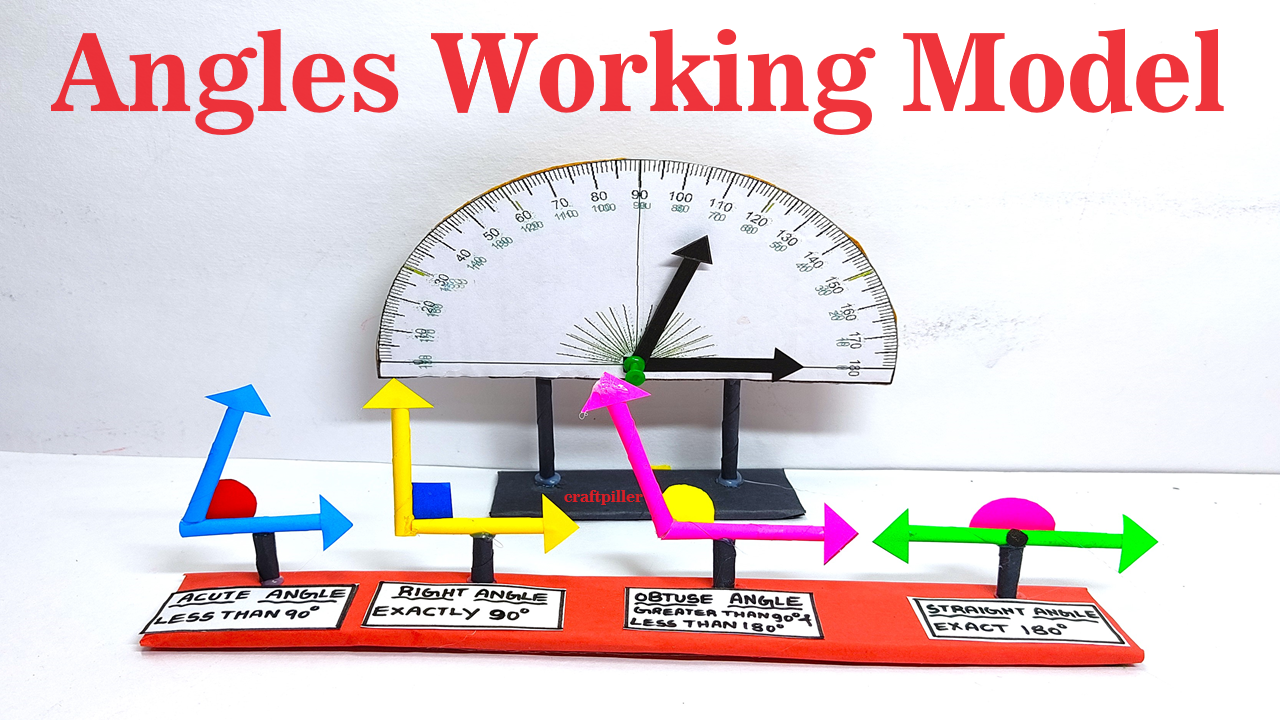Here are 10 math working models focused on angles, suitable for educational purposes:

1. Angle Measuring Tool
- Objective: Create a tool to measure and compare angles.
- Description: Construct a protractor using cardboard or plastic, with a pivoting arm and degree markings. Use it to measure angles on different surfaces or in geometric shapes.
2. Angle Sum Triangle Model
- Objective: Demonstrate the angle sum property of a triangle.
- Description: Create a large triangle using cardboard or paper. Cut out the angles and attach them to demonstrate that the sum of angles in a triangle is always 180 degrees.
3. Constructing Angles with Compass and Ruler
- Objective: Show how to construct specific angles using basic tools.
- Description: Use a compass and ruler to construct angles such as 30 degrees, 45 degrees, and 60 degrees. Demonstrate the steps involved in bisecting angles and constructing parallel lines.
4. Angles in Polygons Model
- Objective: Explore angles in polygons and their relationships.
- Description: Create regular polygons (e.g., triangle, square, pentagon) using cardboard or paper. Label and measure interior angles, discussing the sum of interior angles for different polygon types.
5. Angle Relationships in Parallel Lines Cut by a Transversal
- Objective: Illustrate angle relationships formed by parallel lines and a transversal.
- Description: Create a model with two parallel lines and a third line (transversal) intersecting them. Label and measure corresponding angles, alternate interior angles, and vertically opposite angles.
6. Angle Estimation Game
- Objective: Develop estimation skills for angles.
- Description: Create a game board with different geometric shapes (e.g., squares, rectangles) with labeled angles. Players estimate and measure angles using a protractor, earning points for accuracy.
7. 3D Angles Model
- Objective: Visualize angles in three-dimensional space.
- Description: Use straws, clay, or wire to create three-dimensional shapes (e.g., tetrahedron, cube). Demonstrate and measure angles formed between edges or faces of the shapes.
8. Angle Puzzles and Tangrams
- Objective: Solve puzzles involving angle relationships.
- Description: Use tangram pieces or puzzle cards with geometric shapes. Arrange pieces to form specific angle measures or to match angle relationships described on the cards.
9. Trigonometric Ratios Model
- Objective: Introduce trigonometric ratios (sin, cos, tan) using a model.
- Description: Construct a right triangle using cardboard or wood. Label sides (opposite, adjacent, hypotenuse) and use a protractor to measure and calculate trigonometric ratios for different angles.
10. Sundial Model
- Objective: Explore angles related to time measurement.
- Description: Construct a sundial using a circular base and a gnomon (stick) positioned at an angle corresponding to the latitude. Observe how the gnomon’s shadow changes with the movement of the sun throughout the day.
These math working models on angles provide interactive ways for students to explore geometric concepts, angle measurements, and relationships in a hands-on manner. Adjust the complexity and materials according to grade level and available resources to enhance learning and engagement.

